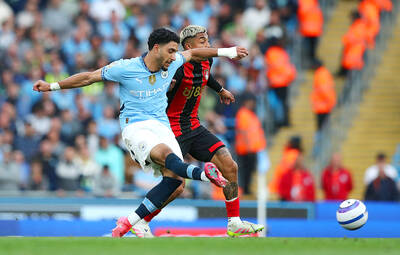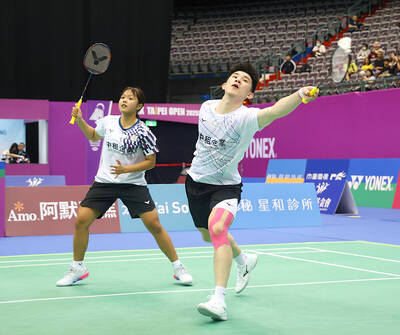Vivian Kong, an Olympic fencer representing Hong Kong, pointed toward the tower where she and the rest of her contingent were staying at the Olympic Village.
Most of the village’s 31 high-rise apartment buildings, which loom over the flat plain of suburban Rio de Janeiro, are decorated in the flags of the countries whose athletes are temporarily living inside. Hong Kong, with 36 athletes, is in a building that includes the United Arab Emirates, Ivory Coast and Jamaica.
Like most others, she had no idea why Hong Kong had been placed in that building with those delegations, or why China and Russia had their own towers, side by side, or why Ireland was in a building with Spain and New Zealand, while the members of the refugee team were in another high-rise, between Slovakia and Bosnia and Herzegovina.
One building has all of the Scandinavian nations except Norway. That country’s team is too big to fit with those of its geographic neighbors, so it shares a building with Malaysia, among others.
It all makes perfect sense to Mario Cilenti. He is the director of the Olympic Village, the one who oversaw who went where. It is a daunting task of mathematical and political calisthenics, keeping together 200 delegations (with nearly 18,000 athletes, coaches and officials) while placing them into mostly 17-story buildings, with 3,604 apartments of varying sizes.
“It’s a big jigsaw puzzle,” Cilenti said on Thursday, shortly after giving a tour of the village to UN Secretary-General Ban Ki-moon, who knows a thing or two about world order. “You start with the big pieces, and then you start filling in the smaller spaces.”
Some request a location. Some ask to be near other countries. Some ask to be away from other countries. Cilenti would not reveal examples. However, all it takes is a look at the flags and banners hanging from the balconies and walls of nearly every high-rise to understand that it cannot be simple and it cannot be random.
Brazil, as the host nation, had first choice. Looking for relative quiet, it chose a building on the edge of the sprawling campus, which stretches about 1.6km from end to end. It put a building-size flag up for all to see from the highway.
Next, the top 10 national organizing committees, by size of their athlete contingents, ranked their priorities and made special requests. That process began about two years ago.
The buildings are not identical; they have different configurations and capacities, with apartments ranging from two bedrooms to five. Delegations might request a building close to the dining hall or the gym, only to accept a secondary choice farther away if it means having a building all to themselves.
“Some really like to take ownership of their space,” Cilenti said.
The US is one such country. It wanted a building that was conveniently situated, but without a lot of distracting pedestrian traffic nearby.
“In this village, there were a number of places that might have been a more strategic location — closer to transportation and the dining room — but it would have meant dividing us into two buildings,” said Leslie Gamez, the US Olympic Committee’s managing director of international games. “In this case, they said that this building can hold about 900 people, which is what we knew our delegation would be.”
Russia and China, next-door neighbors, are among the other sole occupants of buildings, although Russia has dozens of empty rooms, a result of the doping scandal that knocked more than 100 of its athletes out of the Games.
Most delegations gleefully reveal their locations with flags and banners, giving color, and a bit of a hanging-laundry vibe, to the compound. All displays required approval to ensure that they did not hinder fire safety, obstruct vents or views, or become hazards of any sort.
Russia draped its building in giant flags. China pressed identical flags on the inside of each glass balcony, a more disciplined display. Australia striped its building with vertical, nine-story yellow banners that read: “Australia.”
The US’ building stands out because it has no markings, reportedly to reduce the security risk.
“There’s speculation about why we don’t do it,” Gamez said. “We did it in London. It’s Games by Games. We do a lot of decorating on the inside.”
While large countries take up the bulk of the rooms, 80 percent of the delegations have fewer than 100 athletes. On average, the delegations at these Summer Games include about 50 athletes. At least 10 have only one or two. As the buildings fill, the remaining delegations are used to fill the gaps, some of them for just a room or two. That gives the mosaic a bit of randomness.
Which is why a building that includes Bulgaria, Latvia, Lithuania and Serbia also includes Cape Verde, an island nation off the western coast of Africa. A building topped by several floors of Slovene athletes includes Azerbaijan, Portugal, Turkey and Mauritania, an African nation with two athletes.
In general, housing requests are based on culture and, to a lesser degree, language, Cilenti said.
While some countries welcome random selection, others ask to stay away from specific delegations.
Cilenti declined to name them, but said several delegations had asked not to be with Caribbean and Latin American countries because of a reputation for loud music.
“It’s usually not discriminatory and not political,” Cilenti said of the requests.
“It’s more the day-to-day happenings,” he added.
Kong said she appreciated the diversity and welcomed the chance to make awkward small talk with the neighbors in her building.
“We say hi,” Kong said. “Sometimes we try to trade pins, and we do our laundry together on the ground floor.”
The Jamaicans below her could be a bit loud, she said, but added that she did not mind.
Having them nearby was well worth the possibility that she might one day share an elevator with Usain Bolt.

Omar Marmoush’s stunning long-range strike on Tuesday upstaged Kevin de Bruyne on the Manchester City great’s Etihad farewell. Marmoush let fly from about 30m to put City ahead in their 3-1 win against AFC Bournemouth in the Premier League. The victory moved Pep Guardiola’s team up to third in the standings and left qualification for the UEFA Champions League in their own hands heading into the last round of the season. “It’s really important. To be in the Champions League after what happened [this season] will be really nice,” the City manager said. De Bruyne was making his final home appearance for City before

TIGHT FINISH: Napoli only needed to do the same as or better than Inter, who won their game against Como 2-0 on the same day, leaving Napoli with a one-point lead The two players who Antonio Conte wanted more than any others secured Napoli their second Serie A title in three years on Friday. Scott McTominay scored with an acrobatic bicycle kick before halftime and Romelu Lukaku doubled the lead with a solo goal after the break in the decisive 2-0 home win over Cagliari. Conte became the first coach to win the Italian championship with three different teams. “Everyone contributed to this — but the coach most of all,” Napoli captain Giovanni Di Lorenzo said. “Napoli needed him to get back on top. He’s phenomenal.” Comparing it to his three Serie A titles won

The journey of Taiwan’s badminton mixed doubles duo Ye Hong-wei and Nicole Chan at the Malaysia Masters in Kuala Lumpur came to an end in the semi-finals yesterday after they suffered a 2-0 loss to China’s Feng Yanzhe and Huang Dongping. Ye, 25, and Chan, 20, teamed up last year and are currently ranked No. 23 in the world. The Taiwanese shuttlers took on China’s second seeds in the mixed doubles event, but proved no match for Feng and Huang, losing the match 10-21, 7-21. In the first half of the first game, the pairings were neck and neck at 6-7 until Ye

SSC Napoli coach Antonio Conte has dragged the team back from disaster and restored them to the top of Italian Serie A, but his future at the Scudetto winners is in doubt even after a triumphant season. The fiery 55-year-old has exceeded preseason expectations and bolstered his reputation as a serial winner by guiding Napoli to their fourth Scudetto, and second in three seasons. However, he might well be on his way in the summer after just one season at the helm as his charged relationship with Napoli owner Aurelio De Laurentiis has simmered throughout the campaign. Conte has said